How to Assess the Health of a Chinchilla Through Its Eyes
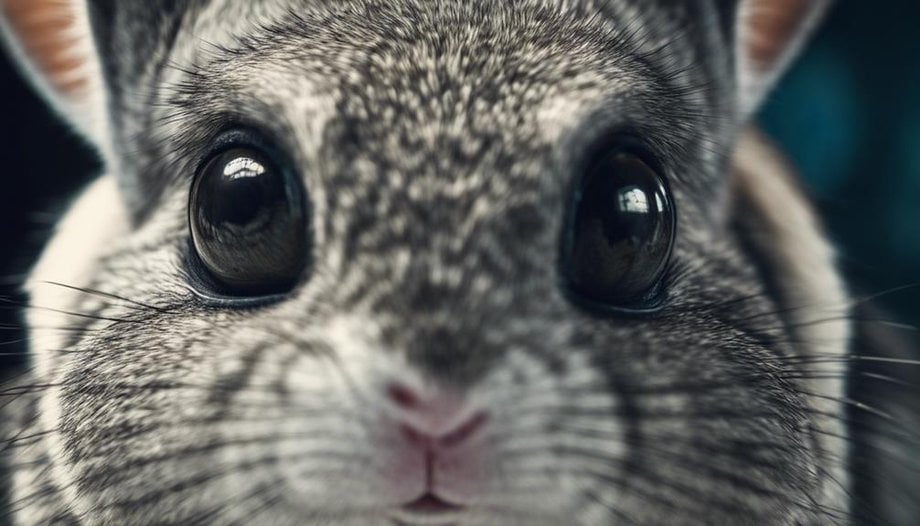
Assessing a chinchilla's health through its eyes is an essential part of their overall well-being. Monitoring their eyes can provide valuable insights into their health status. One important aspect to observe is the clarity of their eyes. Clear, bright eyes usually indicate good health, while dull or cloudy eyes may signal an underlying issue. Another aspect to look out for is tear stains. Excessive tear stains could be a sign of allergies or dental problems. Additionally, keep an eye out for any signs of irritation, such as redness or swelling. If you notice any concerning symptoms related to your chinchilla's eyes, it is best to consult a veterinarian for proper diagnosis and treatment.
Understanding how to assess a chinchilla's eye health can help you proactively monitor their well-being and address any potential issues promptly. Regularly checking their eyes for clarity, tear stains, and signs of irritation can contribute to keeping your chinchilla healthy and happy.
Eye Clarity
Assessing the chinchilla's eye clarity provides valuable insight into its overall health and well-being. The quality of eye health and vision can indicate potential issues that may be affecting the chinchilla. One key aspect to observe is the presence of any eye discharge. Excessive discharge could be a sign of infection or irritation, warranting further investigation and potential treatment to ensure the chinchilla's well-being.
Additionally, monitoring tear production is crucial in evaluating eye health. Adequate tear production is essential for maintaining proper eye lubrication and preventing dryness or discomfort. Changes in tear production levels could signal underlying health concerns that require attention.
Brightness Assessment
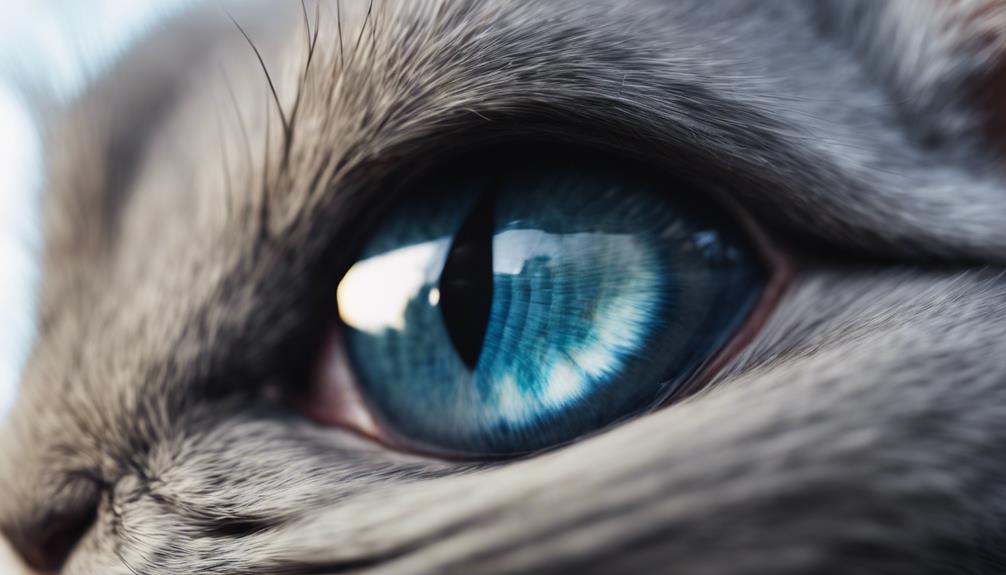
When assessing a chinchilla's health through its eyes, evaluating brightness is crucial.
Eye clarity, pupil size comparison, and eyelid condition all play significant roles in this assessment.
Eye Clarity Evaluation
The evaluation of eye clarity in chinchillas involves assessing the brightness of the eyes to determine potential health issues. When examining a chinchilla's eyes, one should pay attention to any color variation or the presence of eye discharge. Bright, clear eyes are typically a sign of good health in chinchillas.
Dull or cloudy eyes could indicate underlying health problems that require veterinary attention. It's essential to observe any changes in eye clarity, as this can provide valuable insights into the chinchilla's overall well-being. Regular monitoring of eye clarity, along with other physical cues, can help chinchilla owners promptly address any health issues and ensure their furry companions lead healthy lives.
Pupil Size Comparison
To further evaluate chinchilla health, one can examine the pupil size for brightness comparison as an indicator of potential health issues. When assessing a chinchilla's eyes, observing the pupil response can provide valuable insights into its overall eye health.
Here are three key points to consider regarding pupil size comparison:
- Dilated Pupils: Dilated pupils in chinchillas might indicate potential underlying health issues that require veterinary attention.
- Constricted Pupils: Conversely, constricted pupils could also be a sign of discomfort, stress, or eye problems that warrant further investigation.
- Uneven Pupil Size: Variation in pupil size between the two eyes could signal neurological problems or injury, prompting a thorough examination by a professional.
Eyelid Condition Check
Assessing chinchilla health through a brightness assessment of their eyelid condition provides valuable insights into potential health concerns. When conducting this evaluation, it's crucial to pay attention to any signs of eyelid swelling or abnormal discharge. Eyelid swelling could indicate underlying issues such as infection or inflammation, requiring prompt veterinary attention.
Additionally, analyzing any discharge present can offer further clues about the chinchilla's health status. Clear and watery discharge is typically normal, while thick, colored, or excessive discharge may suggest an infection or other health problem.
Regularly monitoring the brightness and overall condition of the eyelids can aid in the early detection of health issues, ensuring timely intervention and optimal care for the chinchilla.
Pupil Size Examination
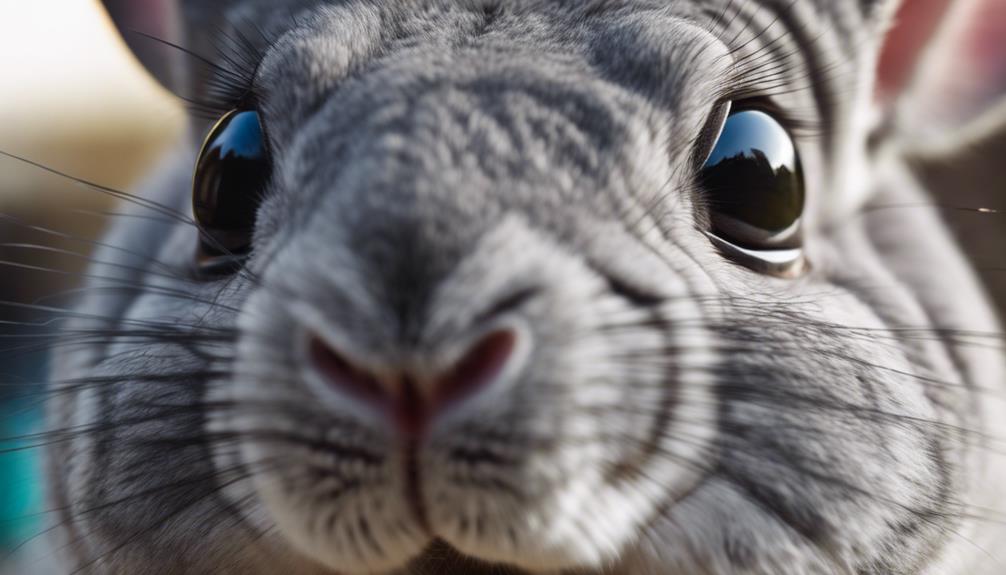
Examining the chinchilla's eyes for pupil size provides valuable insights into its overall health status. When assessing a chinchilla's pupils, veterinarians and chinchilla owners should look for specific indicators that can reveal underlying health issues. Here are some key points to consider:
- Pupil Dilation Analysis: Observing the size of the chinchilla's pupils can help determine if there are any signs of pain, stress, or neurological problems. Uneven pupil size or excessive dilation could indicate a health concern that requires further investigation.
- Eye Discharge Examination: Checking for any unusual discharge around the chinchilla's eyes is essential. Excessive or abnormal eye discharge may suggest an infection, injury, or other eye-related problems that need attention.
- Consistency in Pupil Size: Monitoring the consistency in the chinchilla's pupil size over time is crucial. Sudden changes in pupil size or persistent abnormalities should prompt a visit to a veterinarian for a thorough examination.
Tear Stains Observation
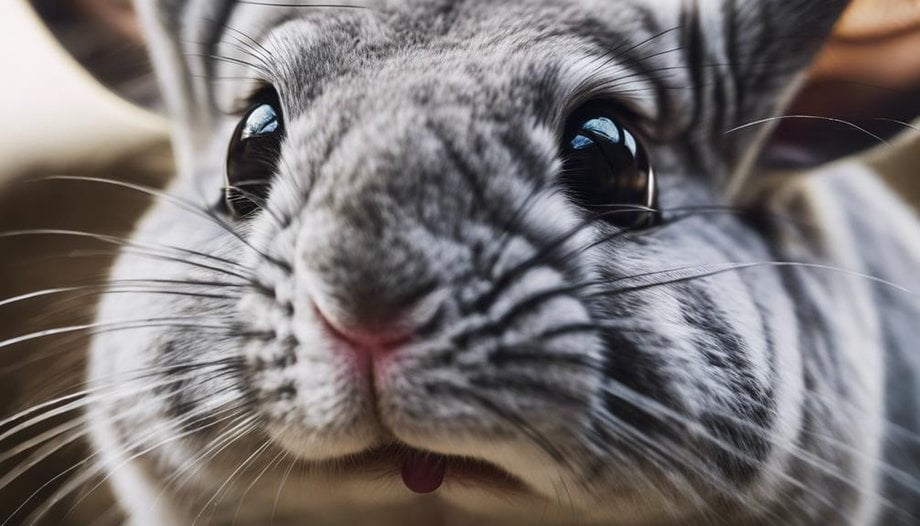
When observing tear stains in chinchillas, the color of the stains can provide valuable insights into the animal's health status. Different colors may indicate varying issues such as infections, allergies, or even dental problems.
Addressing tear stains promptly through appropriate veterinary care and adjustments to the chinchilla's environment or diet can help maintain the animal's overall well-being.
Stain Color Indication
An important aspect in assessing chinchilla health involves observing the tear stain colors as they can provide valuable insights into potential health issues. When examining tear stains in chinchillas, the following points can be considered:
- Stain removal techniques: Knowing how to gently clean tear stains can help in maintaining the chinchilla's eye health.
- Tear health: Different colors of tear stains might indicate varying levels of hydration or underlying health conditions in chinchillas.
- Eye discharge causes: Understanding the reasons behind excessive tear production can aid in addressing potential eye health issues efficiently.
Addressing Tear Stains
To effectively address tear stains in chinchillas, observation plays a crucial role in identifying potential health issues related to their eye health. Tear stain prevention is key in maintaining optimal eye health in chinchillas.
Regularly checking for any signs of tear staining around the eyes can help detect early indications of underlying problems. If tear stains are present, gentle tear stain removal techniques should be employed as part of chinchilla grooming practices.
Ensuring a clean environment, proper nutrition, and regular grooming can aid in preventing tear stains and maintaining the overall health of chinchillas. By staying vigilant and proactive in managing tear stains, chinchilla owners can contribute to their pets' well-being and quality of life.
Eyelid Health Check
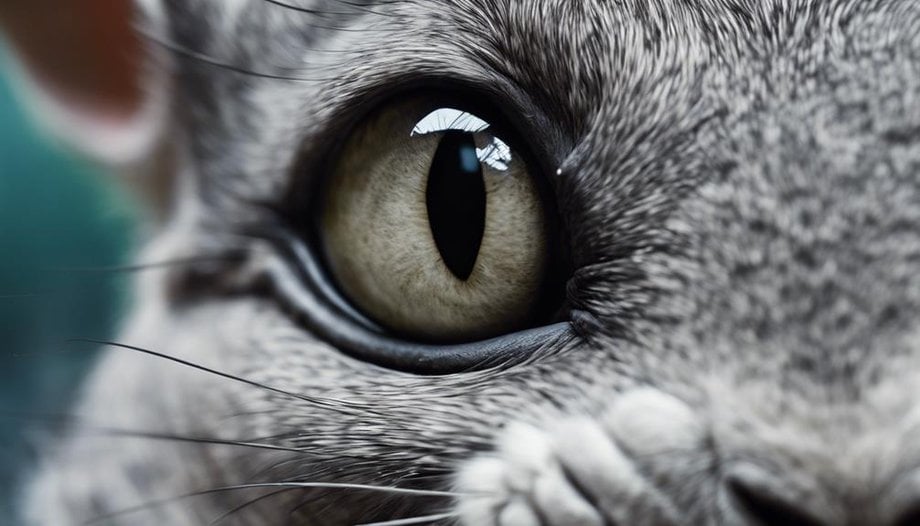
Conducting a thorough examination of a chinchilla's eyelids is crucial to assess its overall health status accurately. When checking a chinchilla's eyelids, one must pay close attention to specific details to ensure a comprehensive evaluation.
Here are some key aspects to consider:
- Eye Discharge Assessment: Look for any signs of abnormal discharge around the eyes, which could indicate an underlying health issue.
- Tear Duct Evaluation: Check the tear ducts for blockages or excessive tearing, as these could suggest problems with tear production or drainage.
- Eyelid Swelling Examination: Inspect the eyelids for any swelling or inflammation, as this could be a sign of infection or injury requiring attention.
Signs of Irritation
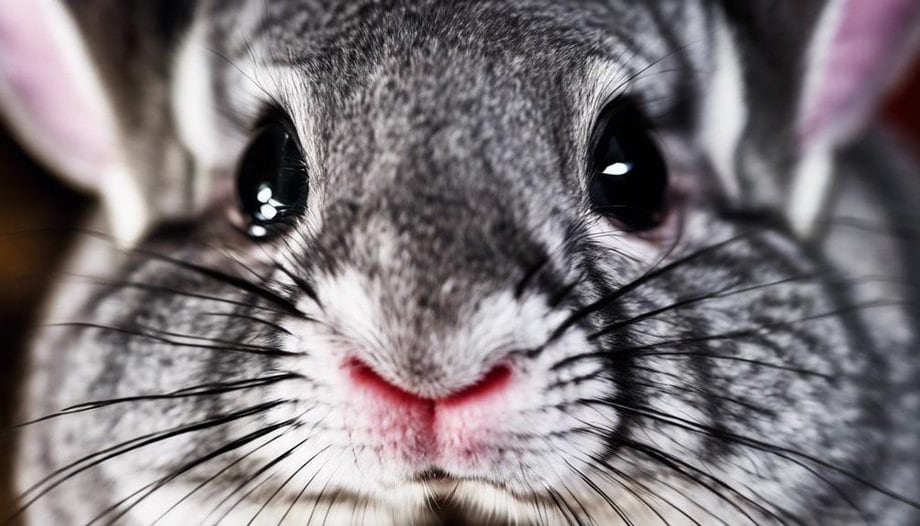
When assessing a chinchilla's eyelids for health, observing signs of irritation is crucial in determining potential underlying issues. Signs of discomfort in a chinchilla's eyes can manifest in various ways. One common indicator of irritation is excessive blinking or squinting. If a chinchilla is frequently rubbing or pawing at its eyes, this behavior may also point towards irritation. Additionally, watery or cloudy eyes can be a sign of discomfort.
During an irritated eyes assessment, it's essential to look for any redness or inflammation around the eye area. Swelling or discharge from the eyes can further indicate underlying problems that require attention. Chinchillas with irritated eyes may also exhibit sensitivity to light, leading them to avoid well-lit areas or keep their eyes closed more often than usual.
Careful observation and prompt action are vital when signs of discomfort in a chinchilla's eyes are detected. Seeking veterinary advice to address the underlying cause of irritation is crucial for maintaining the overall health and well-being of the chinchilla.
Red Flags to Watch For
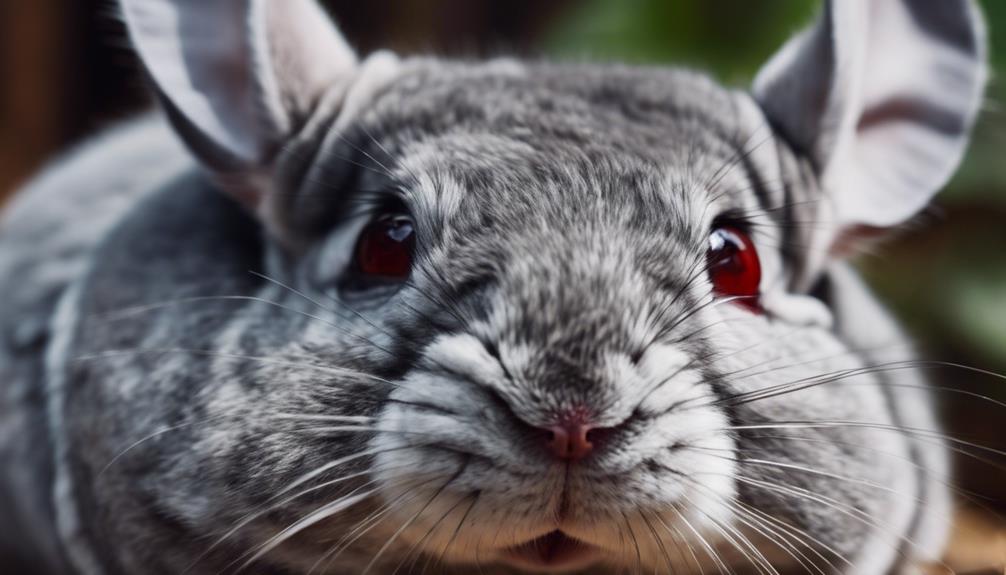
When examining a chinchilla's eyes, be attentive to red flags that could indicate potential health problems. It's crucial to watch out for certain signs that may signal underlying issues. Here are some key red flags to keep an eye out for:
- Eye Discharge Assessment: Check for any unusual discharge, as excessive or discolored discharge could indicate infections or other health concerns.
- Redness Detection: Redness in the eyes could be a sign of irritation, inflammation, or even serious conditions such as glaucoma that require immediate veterinary attention.
- Swelling Observation: Swelling around the eyes or eyelids may indicate an injury, infection, or dental problems, all of which need prompt evaluation and treatment.
In addition to these, it's essential to be vigilant about any changes in the chinchilla's vision. Any alterations in their ability to see clearly or navigate their environment could be indicative of significant health issues that warrant professional assessment. Regular eye examinations can help in early detection and treatment of potential problems, ensuring the well-being of your chinchilla.
Frequently Asked Questions
Can Chinchillas Wear Contact Lenses if They Have Eye Issues?
Chinchillas should not wear contact lenses if they have eye issues. It's crucial to consult a veterinarian for proper diagnosis and treatment. Using chinchilla eyewear can exacerbate vision problems and lead to further complications.
Are There Any Home Remedies to Treat Tear Stains in Chinchillas?
In the realm of chinchilla wellness, natural remedies play a vital role in tear stain prevention. Owners can care for their chinchillas by ensuring a clean environment, a balanced diet, and regular grooming to support overall health.
How Often Should Chinchilla Owners Schedule Eye Exams for Their Pets?
Chinchilla owners should schedule eye exams for their pets biannually to monitor their health. Regular check-ups can help detect any issues early on. Treatment options for eye problems may include prescribed medications, while preventative measures involve maintaining a clean living environment and proper chinchilla care.
Can Chinchillas Develop Cataracts or Other Age-Related Eye Conditions?
Ever watchful of their chinchillas' well-being, owners might wonder if these furry companions can develop cataracts or other age-related eye conditions. Chinchilla vision can be affected by aging, so attentive eye health is crucial for optimal chinchilla care.
Are There Specific Eye Drops or Solutions Recommended for Chinchilla Eye Care?
Proper eye hygiene is crucial for chinchillas. Regular checks and preventative care help maintain eye health. Avoid using human eye drops or solutions. Consult a vet for specialized recommendations tailored to the chinchilla's needs.











